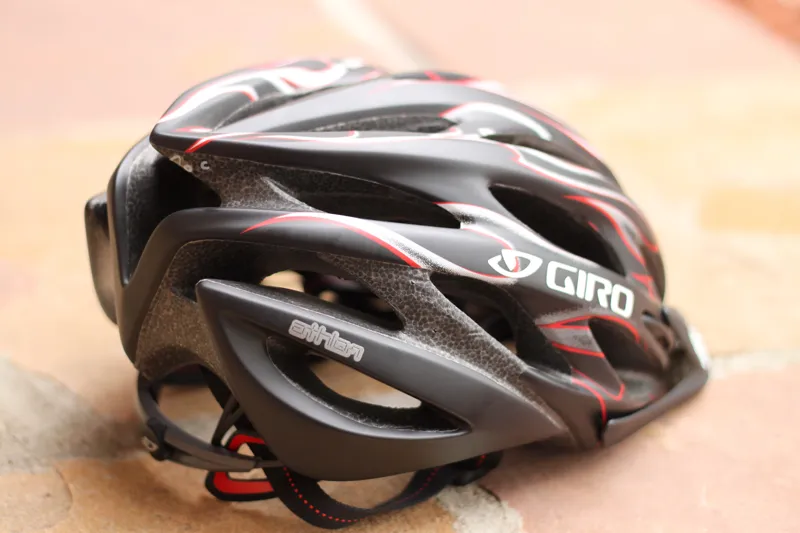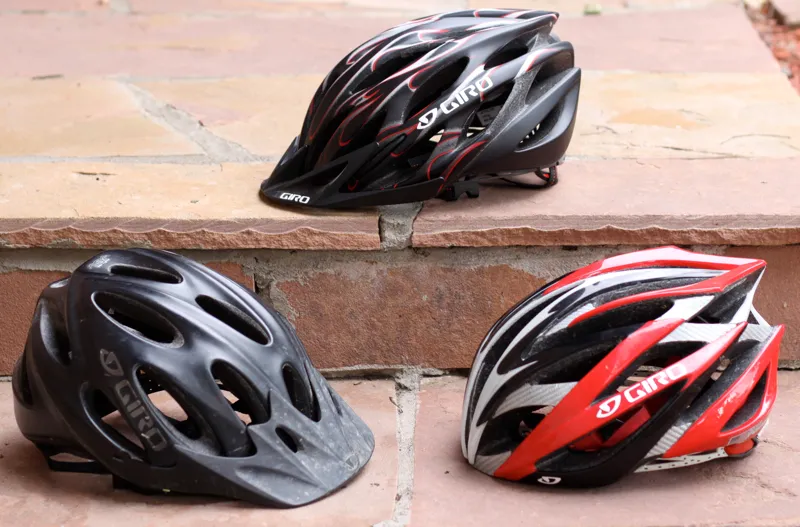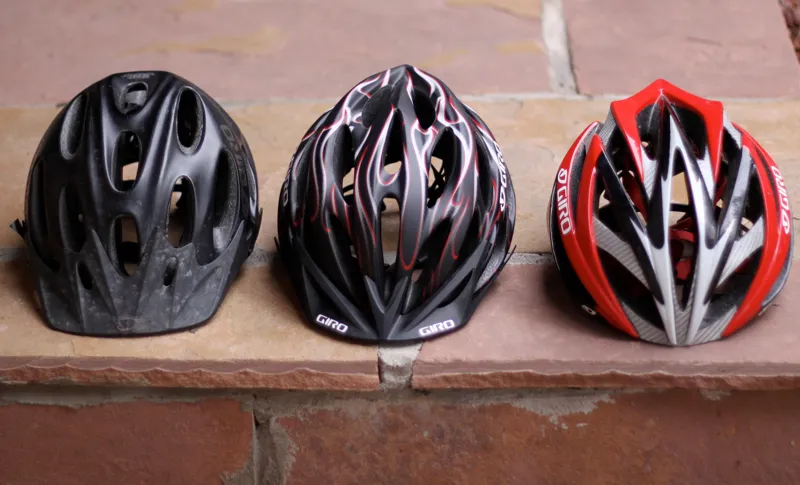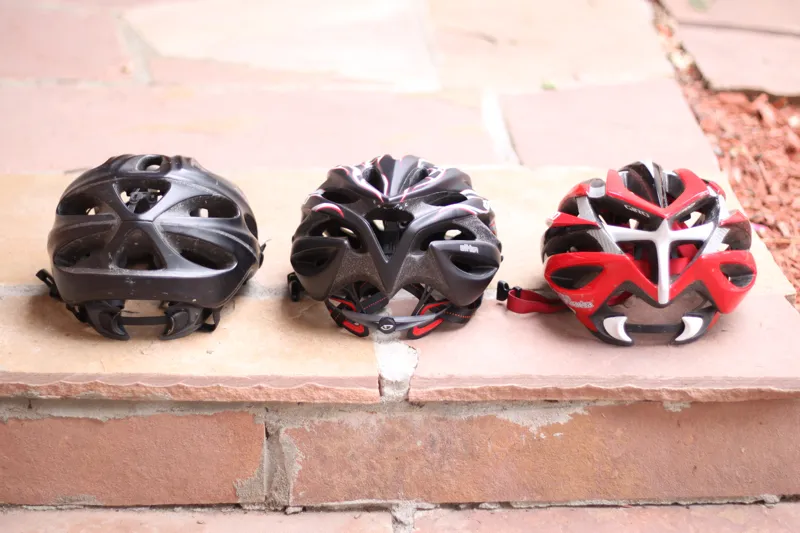The Giro Athlon is undeniably the spawn of the Atmos road helmet and the Xen mountain helmet. It was introduced in 2010 and has been graced with Giro’s just-released Roc Loc 5 retention system for 2011.
The new Athlon does an excellent job of balancing weight, ventilation and protection, while also providing a peak (visor, if you're reading in the US). It is easily recommendable to cross-country racers and cyclo-crossers.
The Athlon fits like a Giro road helmet, with a more oblong profile than that of Bell or other manufacturers. Though our tester tends to gravitate toward rounder shapes, like the Xen or Bell’s Variant, the medium sized Athlon we tested offered an acceptable and comfortable fit.
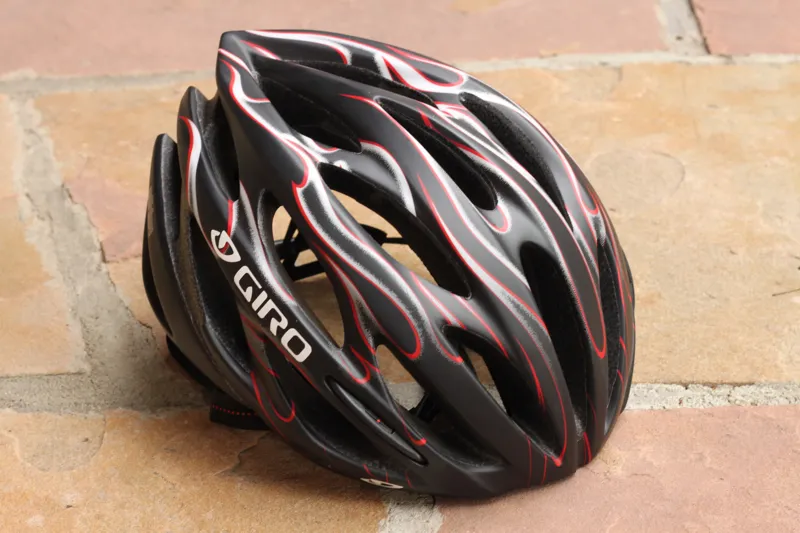
Without a peak, Athlon is easily mistaken for a road helmet
While the vents are wind tunnel engineered, they’re decidedly smaller and more closely spaced than those found on Giro’s road helmets, namely Ionos or Atmos. Despite their size, they do a reasonable job of flowing air and keeping a rider’s head relatively cool even on 90-degree days, which may be a testament to the design’s internal channels.
Still, the most serious cross-country racers will likely continue to prefer one of Giro’s top-road models for their better cooling abilities. While the smaller vents make it hotter, they may offer less opportunity for sticks, rocks and other detritus to enter the helmet.
The real reason to choose the Athlon is for its £99.99 (US$135) price, which is considerably less than either the Ionos or Atmos. This is in part due to its lack of ICS composite sub-frame, and the fact that it’s Giro’s only endurance or race oriented helmet to come with a peak.
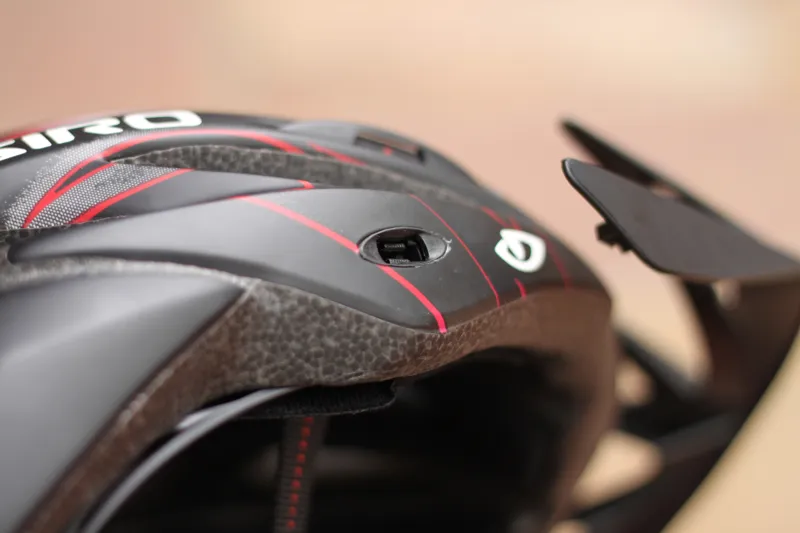
The POV peak snaps to the shell securely and offers 15 degrees of angular adjustment
Like most of this helmet, its low-profile peak is simple and effective. It works adequately to shield some sun and kept a little splatter off our glasses on muddy days. The peak uses a simple snap fit to the shell via a mount called POV, which offers 15 degrees of angular adjustability.
Impressively, the 312g Athlon (with peak) only weighs 17g more than a 2010 Ionos, which is equipped with the heavier Roc Loc 4 retention system. This is made more impressive by the fact that the Athlon’s peak weighs 19g. For further comparison, a Xen weighs 338g. It should be noted that the Athlon weighed 18g less than its advertised 330g weight, on our scale.
New Roc Loc 5 retention system
Roc Loc 5 is an enormous improvement on the Roc Loc 4 system that Giro previously used. That said, the new system simply puts Giro back into the mix rather than vaulting it into the lead. With the previous Roc Loc, we were forced to concede that, even though the brand invented the accessory fit system, they had fallen behind the competition, including sister brand Bell’s GPS fit system.
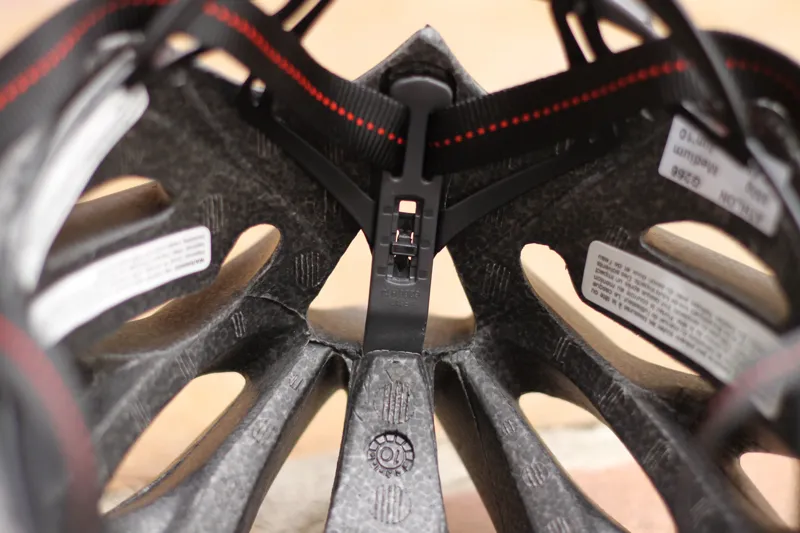
Roc Loc 5 features three positions of vertical adjustment, amounting to 15mm
Roc Loc 5 offers simple one-handed circumferential adjustment through the use of a dial mounted in the centre of the rear cage. The detented adjuster snaps through its positions firmly and offers good range with each click. Once adjusted the system stayed that way – it never even hinted that it would accidentally open, as Bell’s system sometimes does.
The Roc Loc 5 system continues to use Giro’s signature cat-eye style stabilizsers, which now solely act as a part of the retention system as opposed to previous designs, where they housed the adjustment system as well.
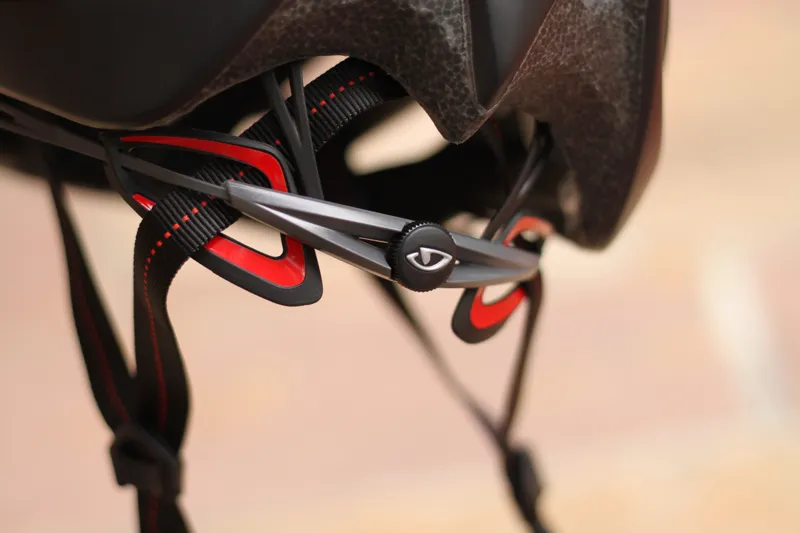
Roc Loc 5 is easily adjustable with one hand using its centre-mounted dial
Finishing touches
Giro use X-Static fabric for the Athlon’s liner, which we found comfortable and effective in channelling sweat down the temples. The two-tone straps are robust and lay comfortably flat against the head both front and rear, with the former attribute aided by the Roc Loc 5’s strap management feature.
The Athlon’s finishing touches are effective, yet very basic. The buckle is a standard plastic quick-release, and the excess strap is held by a simple rubber O-ring. While the main graphics of the helmet are integrated into the in-mould shell cover, the Giro logos are simply stickers, which can be seen as a benefit should you choose to remove them, or detriment due to their likely lack of durability.

